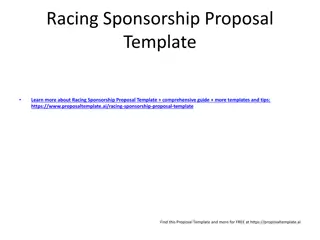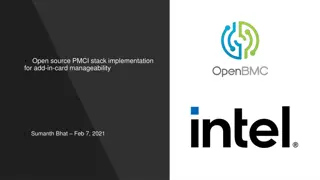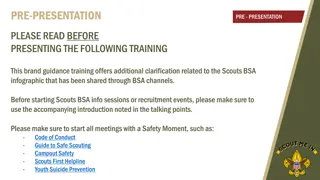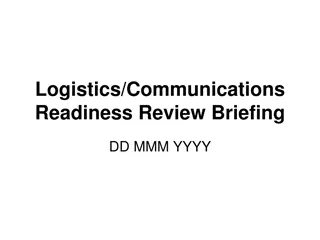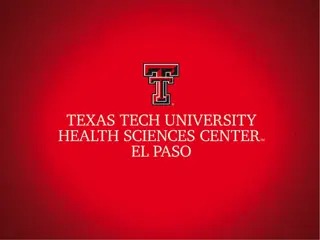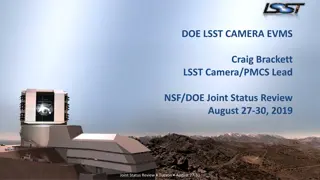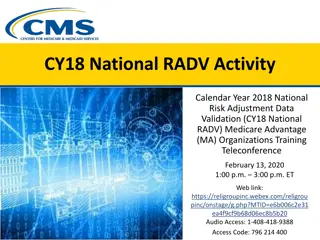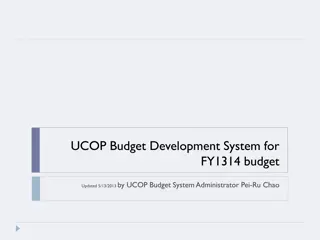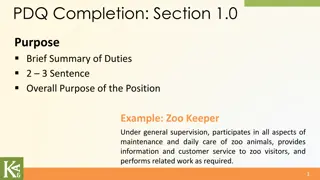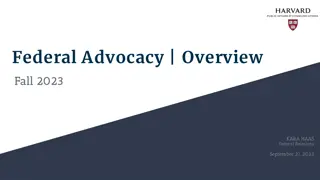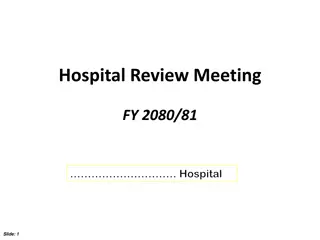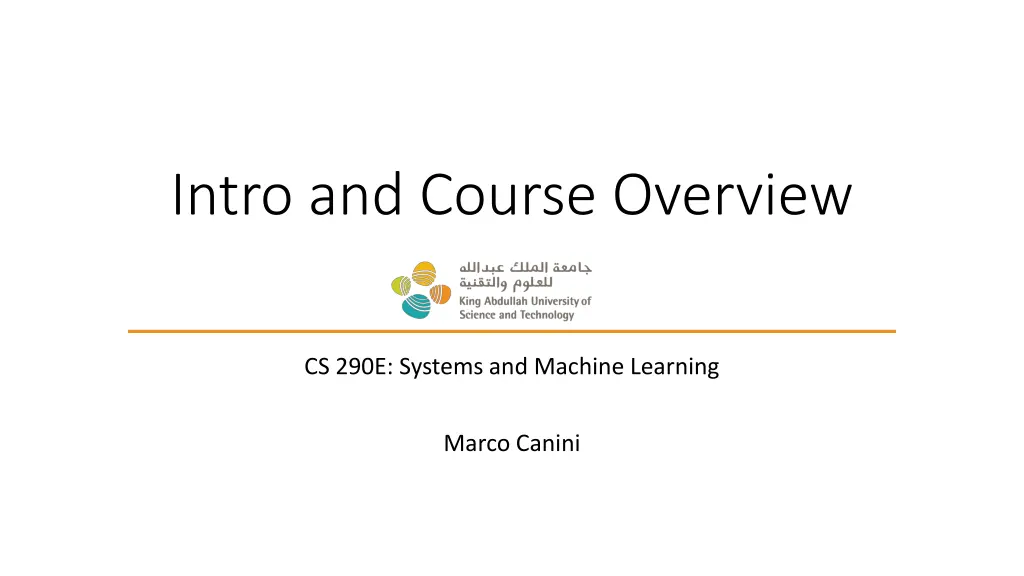
Systems and Machine Learning Overview
Learn about CS 290E course on Systems and Machine Learning by Marco Canini. This advanced course focuses on identifying and solving impactful problems at the intersection of AI/ML and Systems. The class is not introductory and requires good programming skills, along with prior knowledge in AI/ML concepts and related courses. Topics cover ML platforms, model development, hardware acceleration, and more. Explore the course format which includes lectures, discussions, and student presentations.
Download Presentation

Please find below an Image/Link to download the presentation.
The content on the website is provided AS IS for your information and personal use only. It may not be sold, licensed, or shared on other websites without obtaining consent from the author. If you encounter any issues during the download, it is possible that the publisher has removed the file from their server.
You are allowed to download the files provided on this website for personal or commercial use, subject to the condition that they are used lawfully. All files are the property of their respective owners.
The content on the website is provided AS IS for your information and personal use only. It may not be sold, licensed, or shared on other websites without obtaining consent from the author.
E N D
Presentation Transcript
Intro and Course Overview CS 290E: Systems and Machine Learning Marco Canini
Course information Course website http://web.kaust.edu.sa/Faculty/MarcoCanini/classes/CS290E/F19/ Meetings 1PM 2:30 PM (Mon/Thu for lectures and discussions) Please subscribe to Piazza https://piazza.com/kaust.edu.sa/fall2019/cs290e Schedule and reading list are subject to change 2
What do you you expect from this class? 3
What this class is NOT Not an introductory class to AI/ML Students taking the class should already be familiar with AI/ML concepts Not an established syllabus in the subject s area No knowledge is cast in stone; fast-paced progress is continuously happening Corollary: there s no textbook! 4
Should you take this class? Good programming skills One systems-related course (e.g., CS240, CS244, CS245) Taking CS240 same semester is OK One AI/ML-related course (e.g., CS229, CS390DD, Coursera) Experience with ML frameworks (e.g., TensorFlow, PyTorch, etc.) 5
Main goal Identify and solve big/impactful problems at the intersection between AI/ML and Systems 6
Why? The need for systems AI and Compute (https://blog.openai.com/ai-and-compute/) 7
How? Study Major AI developments through systems lens System-related problems that might leverage AI techniques Enable Systems and AI students to collaborate on projects 8
Topics ML Platforms Model Development and Training Frameworks Prediction Serving Hyperparameter Tuning and AutoML Distributed Model Training Model Compilation Hardware Acceleration for Machine Learning Debugging and Interpretability Testing and Verification Secure Machine Learning Machine Learning Applied to Systems Open to inputs and suggestions! 9
Course format Mix of lectures, seminar-style discussions, and student presentations Much discussions in the format of a pretend PC meeting You are responsible for paper readings, and completing a hands-on project 10
Pretend PC Ever wondered what being on a PC is like? Peer reviewing can be frustrating http://matt.might.net/articles/peer-fortress/ To reach some learning objectives of the course, we will pretend to be in a PC 11
Reading assignments All students are required to read all papers All students are required to submit reviews for each paper: Regular reviews answer short, core questions to identify key insights, strengths and weaknesses Detailed reviews go in depth producing something similar to a real review Submit reviews via HotCRP at https://hotcrp.kaust.edu.sa/cs290e 12
Critical reading What is the problem addressed by the paper? Is the problem real? Why is this problem important? What is the hypothesis of the work? What is the proposed solution s main idea, and what key insight guides their solution? Why is the solution different from previous work? Is problem new? Are assumptions different? Is workload different? Does the paper (or do you) identify any fundamental/hard trade-offs? What is one (or more) drawback or limitation of the proposal, and how will you improve it? Do you think the work will be influential in 10 years? Why or why not? 13
Reviews Regular Answer to short questions identifying core novel ideas, strengths, and weaknesses Format will be shared Detailed (2 or 3 per student during the course) What you would produce in an actual PC Format will be shared 14
Typical week Monday Wednesday Thursday 1:00-2:30PM Overview lecture by Instructor 1:00PM deadline Submit paper reviews 1:00-2:30PM Paper discussions Area Chair creates a summary of each paper based on all the reviews Area Chair presents paper summaries and leads the discussions ~7:00PM Area Chair and Instructor identify Champions and Detractors Champions advocate strongly for their papers 8:00PM deadline Area Chair posts the summaries on Piazza Detractors raise their concerns loudly 15
Grading 15% Class Participation Answer questions, join discussion, lead discussion 20% Paper Reviews 50% Project 15% Proposal 35% Report 15% Project Presentation 16
Participation Attend all lectures Can miss at most two with legitimate reasons Read all the papers and participate Ask questions! We evaluate class participation by observing how prepared students are to discuss the covered paper when they come to class 17
Paper reviews You can miss at most 4 regular reviews without any penalty Each missing one beyond that will result in 25% decrease in grade for this segment Meaning, missing 8 or more will result in 0% for the Paper Reviews segment of your grade At the end of the term, grade will start from average of: 2 of your reviews will be randomly selected and graded; the higher grade of the two will be used for grading 1 of your detailed reviews chosen at random and graded Grading by peers can increase this segment when your regular review is marked in top 3: by 2 peers 1%, by 10 or more 5% 18
Project The biggest component of this course: Pick an interesting open problem. Why is it important? What has already been done? Why are they not enough? Develop a hypothesis about how you d improve it Intuitively, why will your approach work? Build a substantial prototype Experiment, measure, and compare against the state-of-the-art Aim at producing a conference/workshop-quality research paper Can be related to your research topic 19
Projects This is a research-oriented course! The final project accounts for 50%+15% of total grade Done in groups of 2-3 students. Find your peers! What can and cannot be a project? Just surveys are not allowed. In fact, each project must include a survey of related work and background An ideal project should answer the questions you asked during paper reviews and points you cared about for presentations Measurements of new environments or of existing solutions on new environments are acceptable upon discussion 20
Original research: How to approach it? 1. Find a problem and motivate why this is worth solving 2. Survey background and related work to get a sense of your (friendly!) competition Might require you to go back to the first step 3. Form/update your hypothesis 4. Test your hypothesis Go back to 3 until you are happy 5. Present your findings in a presentation and in writing Discuss known limitations 21
Milestones Date Milestone Sep 9 Form Group * Week of Details Find like-minded students Sep 19 Draft Proposal Send your 2-page proposal by email Finalize Proposal Checkpoint (15%) Sep 30 After a back-and-forth discussions with the instructor Midterm Presentations (7.5%) Define and motivate a problem, survey related work, describe initial idea and early results, outline time plan Oct 24 Dec 2* Dec 5 Final Presentation (7.5%) Present your findings in a presentation Final Report (35%) 8-page final report similar to the papers you read 22
Draft proposal Read: The Heilmeier s Catechism 2 pages including references that ideally includes The overall goal of your original project What is the problem? | Why is it important to solve? What you will do in some detail?| How would you evaluate your solution? A brief outline of incremental steps to do to finish the project as well as a timeline The goal is to convince both us and yourself that your project is neither too small nor too big Use the SysML 20 Latex style files Include team members Meaning, form a group ASAP Schedule via email a 15-minute meeting to discuss 23
Finalized proposal 4 pages including references that must include Have the structure of the final report Complete introduction written Status of the project Plan for the remaining time Approved by the instructor and agreed upon by you Forms the basis of expectation 24
Midterm presentation In-class short presentation over one day (or two days if necessary) This is to make sure you are making progress Must include What is the problem? Why is it important? What are the most related work? What s your idea and progress so far? How are/will you evaluate it? 25
Final presentation and report Presentation Around 15-20 min, similar to a conference presentation Research paper The key part should be written similar to the papers you ve read Your goal is to do publishable quality ML systems research Up to five best projects will be earmarked for expedited submission to a renowned conference, with the help of the instructor Read: How to Write a Great Research Paper by Simon Peyton Jones Also, submit self-contained code as a zip file 26
Rough outline Abstract Introduction (Highlight the importance and give intuition of solution) Motivation (Use data and simple examples) Overview (Summarize your overall solution so that readers can follow later) Core Idea (Main contribution w/ challenges and how you address them) Implementation (Discuss non-obvious parts of your implementation) Evaluation (Convince readers that it works and when it fails) Related Work (Let readers know that you know your competition!) Discussion (Know your limitations and possible workarounds) Conclusion (Summarize and point out future work) 27
Regular check-ins and meetings Mandatory meeting around the time each milestone is due By appointment Also, send an update (via Piazza) each week to the instructor 1. what you did this week 2. which papers you read this week 3. what you need to do next week to stay on track These updates will not be graded; the idea is to make sure you are making incremental progress 28
Before we move on Late work policy: no extensions Any exceptional circumstances, talk to us early Zero tolerance for academic misconduct Cheating, plagiarism, any form of dishonesty will be handled with maximum severity Slides will be posted after the class Everyone must read all the assigned papers before class 29
Plan for next meetings Thu 29 What makes great ML Systems Research? Readings to be done before class One trial (not graded) review: A Berkeley View of Systems Challenges for AI Next week Background Review A review of the latest breakthrough in AI/ML Also, have a look at the schedule and look through the linked resources and optional readings 30

![❤[READ]❤ Deep Space Craft: An Overview of Interplanetary Flight (Springer Praxis](/thumb/21511/read-deep-space-craft-an-overview-of-interplanetary-flight-springer-praxis.jpg)



